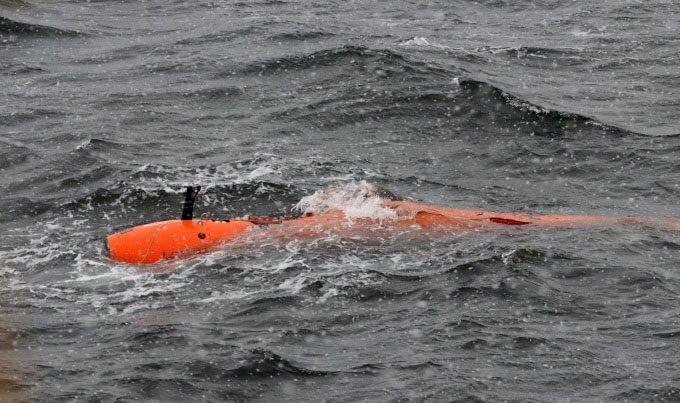Ran, a 7-meter-long autonomous underwater vehicle from the University of Gothenburg, went missing last weekend during an exploration with the RV/IB Araon icebreaker from South Korea.
Ran, an important glacier research submarine, has been reported missing, SciTechDaily reported on February 4. Ran is equipped with advanced sensors and technology capable of measuring and recording underwater environments. It can perform extended missions beneath ice and has successfully operated in Antarctica and other locations. The project is led by Professor Anna Wahlin at the University of Gothenburg.

The autonomous underwater vehicle Ran is programmed beforehand and then dives beneath the Antarctic glacier to conduct extensive research. (Photo: Anna Wahlin).
“This is the second time we have taken Ran to the Thwaites Glacier to study the area beneath the ice. Thanks to Ran, we became the first researchers in the world to enter Thwaites in 2019. On this new expedition, we are visiting this area again. Although we have observed melting and movement of the ice from satellite data, with Ran, we will obtain close-up images of the area beneath the ice and information about the precise mechanisms behind the melting,” said Anna Wahlin.
The Thwaites Glacier in Antarctica is enormous and is sometimes referred to as the “Doomsday Glacier” due to its potential to raise global sea levels by several meters if it fully melts. Therefore, the data collected by Ran is of significant interest not only to scientists studying polar regions.
During its dive beneath the 200 – 500 meter thick ice, Ran did not maintain continuous communication with the RV/IB Araon research vessel. The route was pre-programmed, and thanks to advanced navigation systems, Ran was able to find its way back to open water.
In January, Ran completed several dives beneath the Thwaites Glacier, but during the last planned dive, an incident occurred. After a long journey beneath the ice, it did not surface at the scheduled meeting point. The RV/IB Araon canceled the return journey, and experts organized multiple searches using sonar, helicopters, and drones, but all attempts were unsuccessful.
“This is akin to searching for a needle in a haystack, without even knowing where the bottom of the haystack is. At this point, Ran has run out of battery. All we know is that an anomaly occurred beneath the ice. We suspect the submarine encountered an issue, and something prevented it from escaping,” said Anna Wahlin.
“The data we receive from Ran is unique in the world and holds great value for international research. At the same time, the risks are also significant. We knew such incidents could happen; it could be the end for Ran. Personally, I believe it is better than letting the submarine ‘age’ and collect dust in storage. Of course, this is still an immense loss. We have deployed Ran for 5 years, and in those 5 years, we have conducted about 10 expeditions, training, development, and testing,” Anna Wahlin stated. The research team plans to look for ways to replace Ran in the future.


















































